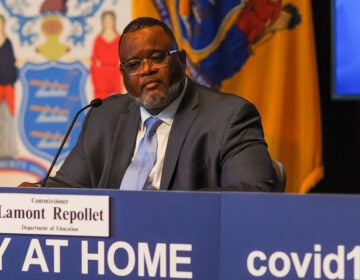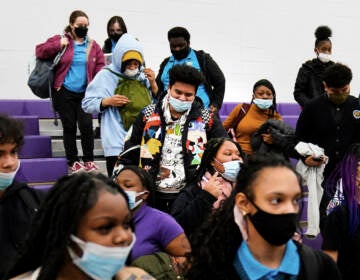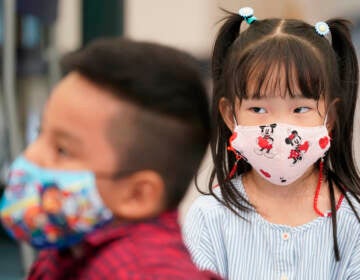How the pandemic has transformed the N.J. college experience and could transform it even more
Educators begin to come to terms with how the health crisis has utterly altered college life in New Jersey, its finances and its outlook: part one.

Online learning has been the order of the day for William Paterson University students and students at other New Jersey colleges, since mid-March. (WPU)
This article originally appeared on NJ Spotlight.
___
Colleges change with the times. New Jersey’s colonial theological seminaries are today’s leading research universities; its teacher training colleges expanded to liberal arts; and an education once reserved for white wealthy males is now open to all.
Higher education is on the cusp of another transformation, but not for occupational or societal reasons: the drivers this time are a coronavirus pandemic that sent students home for virtual learning and a gutted economy some fear might keep them there.
Three overarching factors could shape this transformation: whether in-person classes resume this fall; if they do, how new social-distancing rules will change classrooms, scheduling, dormitories and transportation; and colleges’ and families’ financial status. A fourth X-factor: students and parents, and how they’ll react to changes in the college experience or potentially, ongoing pandemic-related restrictions.
Financial factors
“All of our academic lives, we’re trained to pursue and share knowledge. Right now, there’s more that we don’t know than we know, but I share what I can,” said Richard J. Helldobler, president of William Paterson University in Wayne. In one message to faculty and staff he describes the overall situation bluntly: the outlook for the 2020-2021 fiscal year appears “bleak, and it is likely we will face some hard choices together.”
He’s not alone in his concerns. Many New Jersey colleges face an array of difficult decisions because of a perfect storm: the pandemic’s severe toll on the state’s fiscal health; the uncertainty of additional relief from the federal government; and questions around enrollment, as tuition, room and board are major revenue streams.
Some colleges have already announced hiring freezes, furloughs, holds on construction projects and more, while others brace for similar hardships.
Two of several examples: Rutgers University, anticipating a revenue budget shortfall of $200 million this fiscal year, announced several cost-saving steps it is taking, with some critics advocating additional measures. The New Jersey Institute of Technology (NJIT), while successfully addressing budget shortfalls this fiscal year, is planning the 2020-2021 budget based on “grim assumptions” with a need to explore a broad range of strategies for cost containment and revenue enhancement.
The most extreme, but possible, outcome of a college’s sustained economic problems is closure. According to an Education Dive database, 60 private and public nonprofit colleges across the country have either closed or merged since 2016. Already, two colleges nationally have cited the coronavirus as a factor in closing their doors, and with many colleges operating on financially shaky ground before the pandemic, more are expected to follow.

“Many higher education institutions are facing a short-term liquidity problem. Among the solutions are to borrow, do anything you can to get people in the door, and pray,” said Steven Mintz, a senior adviser to the president for student success and strategic initiatives at Hunter College in New York City and frequent contributor to Inside Higher Education. “In the long term, it is a Darwinian situation.”
New Jersey colleges’ financial plight begins, but doesn’t end, with state aid for higher education, which has essentially remained flat since fiscal year 2006. Of the $1.66 billion appropriated for fiscal year 2020, about $132 million has been pulled back as part of Gov. Phil Murphy’s pandemic-related spending freeze. In addition, colleges are under numerous contractual obligations that can’t be ignored; the potential exists for private donations and grant funding to dry up; and in some cases, investments in new technology or campus adaptations must be made. With many parents and working students furloughed, unemployed or worried about either prospect, enrollment could plummet (especially among international students, who typically pay full sticker price) or colleges may be unable to meet the demand for financial aid.
Under the first wave of federal CARES Act emergency funding for higher education institutions, New Jersey’s public two- and four-year colleges and universities were awarded a combined $238,113,748, with private four-year colleges, technical and trade schools, and seminaries sharing another $84,967,031. (Princeton University, like other Ivy League colleges with robust endowments, declined its allocation of the aid.) Half of each college’s stipend is earmarked for financially needy students, who must apply through their institution for the aid, a process currently underway.
At the end of April, a second round of CARES Act aid was announced, this time earmarked specifically for historically black colleges and universities (HBCUs), minority-serving institutions and universities serving low-income students. Colleges have until August 1 to apply for their share of the nearly $1.4 billion available.
The CARES Act funding eases some of the colleges’ pandemic-related burdens, but certainly not all. For example, The College of New Jersey (TCNJ)’s allocation available for institutional spending is about $2.5 million. Meantime, it will issue refunds to students for housing, meal plans and parking totaling about $13.4 million.
To gain ground on these shortfalls, colleges will likely turn to their reserves. “It’s our rainy day account that we can use during emergencies such as these,” said Kathryn A. Foster, president of TCNJ. “However, our focus is on creating a conservative budget. We can’t control our revenue, but we can control what we spend.”
In calling for additional government aid for higher education, Eugene Lepore, executive director, New Jersey Association of State Colleges and Universities, said it’s an investment in the state’s financial health.
“As major employers in their region, educators of the state’s future workforce, bastions of innovation and entrepreneurship, and vehicles for upward socioeconomic mobility, New Jersey’s state colleges and universities are fundamental to the economic recovery,” he said. “Therefore, it is imperative that the federal and state governments make the investments that will help these institutions continue to thrive.”
Students, too, are looking for all the financial help they can find. In April the state Senate passed S-2356, which would ensure that students don’t lose a future semester of financial aid eligibility if the coronavirus emergency prevents them from finishing their spring 2020 semester. It would also require the state to waive the usual amount of aid to be repaid by students who withdraw or reduce credits below their enrollment status, whether full- or part-time. And the measure would alter the grade point average requirement under the NJ STARS program to accommodate pass/fail grading. A companion bill was advanced by the state Assembly Appropriations Committee on May 4.
Additionally, on May 5, a new recruitment program aimed at bringing back out-of-state students to “help revitalize your state with your talent and service” was announced. NJ Scholar Corps promises an easy transfer process, acceptance of course credits in which a C or above was earned and access to scholarships at 10 New Jersey colleges. New Jersey has one of the highest student exodus rates in the country, with more than 33,000 students choosing out-of-state schools each year.
Planning for the unknown
Since mid-March, New Jersey college campuses have been closed to all but a few essential workers and students with extenuating circumstances. In parts of the U.S. currently less affected by COVID-19, some college presidents have said their campuses will reopen in the fall. It’s a promise their New Jersey peers can’t make now.
“It’s going to take us significantly longer to make that decision, which will be guided by the data and the science, whether the curve flattens and the availability of ramped-up testing,” said Helldobler of William Paterson University. “We’re hoping for the best but planning for the worst.”
William Paterson’s senior administrators, like those on college campuses throughout the state, meet several times a week to assess a variety of scenarios. Among them, said Helldobler, are:
- delaying the start of the fall semester (faculty are committed to 32 weeks of instruction each academic year, but their contract does not specify the timing of it);
- alternating class schedules aimed at reducing the number of people on campus at one time;
- continuation of virtual learning.
He anticipates being able to provide more clarity to the college’s 10,000-plus students, 1,000 full-time and adjunct professors and 900 full- and part-time staff members at the end of June.
Every scenario has several layers of complexity — and associated costs. “Every question we answer leads to another,” said Foster, the TCNJ president. “We’re asking not only what can we do, but how these scenarios affect budget.”
Take housing, for example, which at TCNJ accommodates about 4,000 students in 15 dorms or apartments. If housing opens, do double rooms become singles? If only half the residential students can live in campus housing, how are they chosen and what can be offered to the rest? How could a one-person-per-room rule affect price at a time when many families can’t afford to pay more?
And perhaps the most challenging scenario of all: how to prevent a COVID-19 outbreak in a dorm and manage it if it occurs.
Felician University, a private Catholic, primarily commuter college, with Lodi and Rutherford campuses, is also in planning mode. “We’re looking at several scenarios, although like everyone else, wish we had a crystal ball to predict what’s ahead,” said Anne Prisco, Felician’s president. One advantage it has regarding social-distance planning is small class size. “We don’t have large auditorium classes — our average class size is 15 students — so we can look for rooms that accommodate 30 people and space out seating,” she said.
As colleges prepare for many unknowns, she said, it’s imperative they keep the unique needs of their students front and center. At Felician, it’s been focusing on the challenges first-generation college students face, and an across-the-board freeze was made on 2020-2021 tuition, housing and room and board.
“We were planning a 2% increase, but many of our students are the first in their families to attend college, and that $600 or $700 means a lot,” said Prisco. “Instead, we decided what we could live without to keep student costs from increasing.”
College administrators aren’t the only ones weighing important decisions. Many students and their parents are expected to reexamine their fall plans in light of the potential for continued online instruction and the nation’s economic woes.
WHYY is your source for fact-based, in-depth journalism and information. As a nonprofit organization, we rely on financial support from readers like you. Please give today.





![CoronavirusPandemic_1024x512[1]](https://whyy.org/wp-content/uploads/2020/03/CoronavirusPandemic_1024x5121-300x150.jpg)

